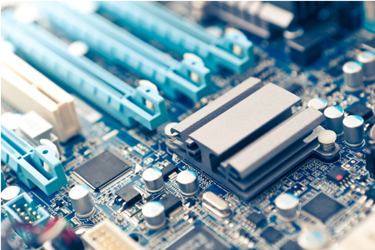The Rise Of LTCC-Based Passive Integration In RF Front Ends: Trends And Engineering Impacts

By John Oncea, Editor

LTCC-based passive integration accelerates RF design, offering compact, high-performance solutions for 5G, radar, and IoT with improved thermal and frequency stability.
As RF systems push further into mmWave frequencies and multi-band operations, the challenges around integration, signal integrity, and form factors are intensifying. One technology stepping up to meet these demands is Low-Temperature Co-fired Ceramic (LTCC), a mature yet rapidly evolving platform that is now seeing a renaissance in passive RF component design.
The move underscores an ongoing industry trend: integrating multiple passive RF functions – filters, baluns, couplers, and matching networks – into a single, miniaturized ceramic substrate, drastically improving performance, consistency, and size efficiency in complex front-end architectures.
Here, we’ll explore what this means for RF designers, evaluate key benefits and limitations of LTCC integration, and look at where this technology is headed in the 2025–2026 design cycle.
Why LTCC Is Gaining Momentum In RF Systems
LTCC technology has long been used in high-frequency modules due to its excellent dimensional stability, multilayer capability, and low dielectric loss at microwave frequencies, according to PRFI. But recent advancements have expanded its utility beyond discrete filters or couplers – paving the way for fully integrated RF front-end subassemblies. Driving this trend are:
- 5G-Advanced and 6G systems: Higher frequency bands (especially FR2: 24.25–52.6 GHz) require tighter integration to maintain signal fidelity while reducing size, according to Mini-Circuits.
- Automotive radar: 77–81 GHz systems demand compact, thermally robust passive components with high repeatability.
- IoT and UWB devices: Size-constrained systems operating across broad frequency ranges benefit from compact, multifunction passives, according to Cadence.
LTCC substrates allow multiple layers of high-Q inductors, capacitors, transmission lines, and even resonators to be co-fired into a solid-state module. This eliminates assembly parasitics and enables better impedance control and shielding than traditional PCB-based or SMT approaches.
Engineering Advantages Of LTCC Passive Integration
Let’s break down how LTCC offers tangible benefits for RF system engineers:
- Miniaturization: With up to 20 or more layers of ceramic substrate available, LTCC enables 3D passive integration. This results in significant board space savings – especially critical in antenna-in-package (AiP) and system-in-package (SiP) designs.
- Superior Thermal and Environmental Stability: LTCC structures exhibit low TCE (thermal coefficient of expansion) and excellent thermal conductivity compared to organic substrates. This makes them ideal for high-power or high-temperature applications, such as radar transceivers or outdoor small cells.
- Improved RF Performance: LTCC’s inherent low dielectric loss tangent (tanδ ~ 0.001–0.005) allows for high-Q structures. Designers can achieve sharp filter roll-offs, tight coupler balance, and stable matching networks with repeatable performance from unit to unit.
- Reduced Assembly Complexity: By embedding passives into a single co-fired device, LTCC reduces the need for multiple solder joints, vias, and interconnects – improving yield and reliability while lowering BOM count.
- EMI Shielding and Isolation: Built-in ground planes and isolation cavities between layers mitigate crosstalk and enable better isolation between signal paths, a growing concern in dense RF front ends.
Design Considerations And Limitations
Despite its many benefits, engineers should be mindful of certain LTCC trade-offs:
- Cost and Lead Time: LTCC components can have higher NRE (non-recurring engineering) costs and longer fabrication cycles, especially for custom designs. They are most cost-effective when used in high-volume applications.
- Design Flexibility: Once fired, the design is fixed. Unlike PCB layouts, which can be quickly iterated, LTCC modules require careful up-front modeling and simulation. This calls for close collaboration with vendors during the design phase.
- Material Choices and Compatibility: LTCC is available in various formulations and material constants (εr, tanδ, CTE) can vary. Designers must ensure that RF models match the vendor's stack-up and dielectric characteristics precisely.
Applications Where LTCC Integration Excels
Based on market demand and performance requirements, here are several areas where LTCC passive integration is taking off in 2025:
- mmWave 5G/6G Small Cells: Compact front-end modules with multi-band filtering.
- Automotive Radar (77–81 GHz): Miniature, high-Q filters with robust environmental tolerance.
- Defense and Aerospace Comms: Rugged, reliable modules for phased arrays and SATCOM.
- Wearable and IoT Devices: Low-profile, integrated passives with excellent electrical shielding.
- Sub-THz Prototyping: LTCC’s dimensional stability makes it suitable for experimental filters and couplers above 60 GHz.
Looking Forward: LTCC In 2026 And Beyond
As system-level packaging continues to evolve, LTCC is positioned as a key enabler of RF front-end integration, especially for applications where size, frequency, and environmental factors collide.
Expect to see:
- Increased use of AI-driven co-design tools for LTCC layout optimization.
- Emerging materials with lower εr and tanδ, enabling even better high-frequency performance.
- Hybrid LTCC/semiconductor integration combining passives and MMICs in a single stack.
- Sustainable and recyclable ceramics to meet growing environmental design requirements.
In 2025, LTCC-based passive integration is no longer niche – it’s becoming a cornerstone of high-performance RF module design. With companies investing in next-gen LTCC platforms, RF engineers are equipped with powerful tools to build smaller, faster, and more reliable systems at mmWave frequencies and beyond.
Whether you’re designing for 5G small cells, automotive radar, or next-gen wearables, LTCC deserves serious consideration in your passive integration strategy.
